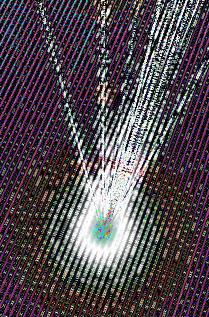Spin coherence extended
 Australian quantum computing engineers have set a new standard in silicon chip performance.
Australian quantum computing engineers have set a new standard in silicon chip performance.
UNSW engineers have substantially extended the time that their quantum computing processors can hold information by more than 100 times compared to previous results.
Two milliseconds - two thousandths of a second - is an extraordinarily long time in the world of quantum computing.
Researchers at UNSW Sydney have broken new ground in proving that ‘spin qubits’ - properties of electrons representing the basic units of information in quantum computers - can hold information for up to two milliseconds.
Known as ‘coherence time’, the duration of time that qubits can be manipulated in increasingly complicated calculations, the achievement is 100 times longer than previous benchmarks in the same quantum processor.
“Longer coherence time means you have more time over which your quantum information is stored – which is exactly what you need when doing quantum operations,” says PhD student Ms Amanda Seedhouse, whose work in theoretical quantum computing contributed to the achievement.
“The coherence time is basically telling you how long you can do all of the operations in whatever algorithm or sequence you want to do before you've lost all the information in your qubits.”
In quantum computing, the longer that spins are kept in motion, the better the chance that the information can be maintained during calculations. When spin qubits stop spinning, the calculation collapses and the values represented by each qubit are lost.
In research published last year, the same team at UNSW Sydney came up with a way to manipulate millions of qubits using just one antenna.
While control of millions of qubits at once is a great feat, working quantum computers will also need them to be manipulated individually. In the latest project, researchers set out to find a way control them individually so they can represent different values in a calculation.
“First we showed theoretically that we can improve the coherence time by continuously rotating the qubits,” says researcher Ingvild Hansen.
“If you imagine a circus performer spinning plates, while they’re still spinning, the performance can continue. In the same way, if we continuously drive qubits, they can hold information for longer. We showed that such ‘dressed’ qubits had coherence times of more than 230 microseconds [230 millionths of a second].”
The next challenge was to make the protocol more robust and to show that the globally controlled electrons can also be controlled individually so that they could hold different values needed for complex calculations.
This was achieved by creating what the team dubbed the ‘SMART’ qubit protocol – Sinusoidally Modulated, Always Rotating and Tailored.
Rather than have qubits spinning in circles, they manipulated them to rock back and forth like a metronome. Then, if an electric field is applied individually to any qubit – putting it out of resonance – it can be put into a different tempo to its neighbours, but still moving at the same rhythm.
“Think of it like two kids on a swing who are pretty much going forward and backwards in sync,” says Ms Seedhouse.
“If we give one of them a push, we can get them reaching the end of their arc at opposite ends, so one can be a 0 when the other is now a 1.”
The result is that not only can a qubit be controlled individually (electronically) while under the influence of global control (magnetically) but the coherence time is, as stated earlier, substantially longer and suitable for quantum calculations.
“We have shown a simple and elegant way to control all qubits at once that also comes with a better performance,” says Dr Henry Yang, one of the senior researchers in the team.
“The SMART protocol will be a potential path for full-scale quantum computers.”
More details are available here.







 Print
Print